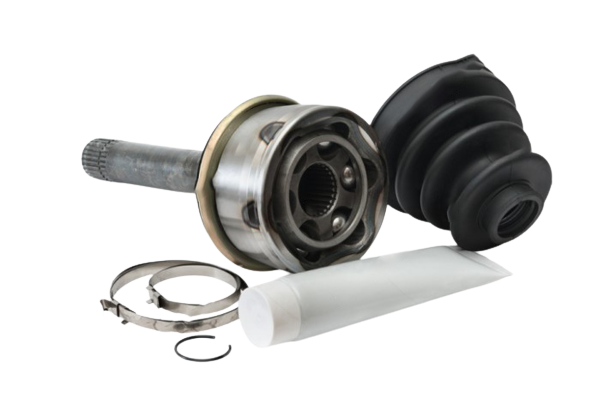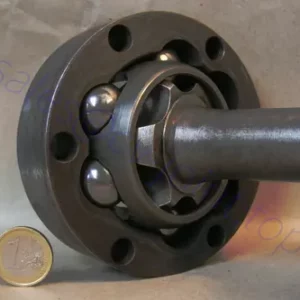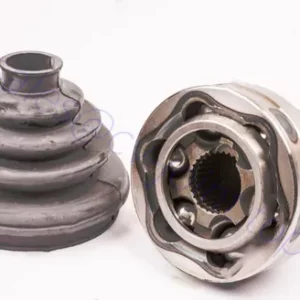Cv Joint
In a front-wheel-drive car, a CV joint (constant velocity joint) transfers power to the wheels while also providing steering for your car. There are four in total. These joints are located at the ends of the drive shafts, connecting them to the wheels and transmission. If your car is infrequently serviced, it may be time to replace the CV joint.
What is a CV Joint?
CV (Constant Velocity) joints, also known as half shafts, are responsible for distributing power from the vehicle’s transmission to the drive wheels in FWD vehicles. FWD vehicles have 2 independent CV axles, one between the vehicle’s transmission and each front wheel.
The real value of a CV joint is its ability to flex and articulate as the vehicle’s suspension moves up and down. This is achieved while continuing to provide power to each drive wheel.
To maintain this level of articulation, each individual joint must remain lubricated and free of contaminants.
This is achieved by using a specialized rubber boot with an accordion-style diaphragm. Assuming the boot itself stays in top shape, there is always grease inside that boot.
Our Products
As a cv joint manufacturer, we will do our best to serve you. If you need customized products, or the products you need are not found on our website or need a product catalog, don’t worry, more of our products are still being uploaded. You can email us directly, and we will reply to you within 24 hours!
-
Car Spare Parts Outer Cage Repair Kit Ball Joint Constant Velocity Joint
-
CV Joint Outer CV Joint for Cover 95% of Models
-
Hot Sale High Quality Parts CV Joint Kit CV Joint Drive Shaft CV Joint Bearing
-
Other Auto Parts Factory High Quality Constant Velocity Universal Joint Outer CV Joint
-
Other Product
-
WA Series Wide Angle CV Joint for PTO Shaft
What Could Cause a Damaged CV Joint?
The most common cause of failure of constant velocity joints is the deterioration of the corresponding boots that contain such joints. When a CV joint boot is damaged, any grease in it dissipates quickly. In turn, this causes the CV joint to dry out and stick.
Additionally, a damaged CV joint guard will allow contaminants such as road debris to come into contact with the joint itself.
Constant velocity joints are also prone to accelerated wear when placed at extreme angles. This is most common in the case of lift vehicles, which often have aftermarket suspension components.

How Does a CV Joint Work?
A constant velocity or CV joint is used to connect the vehicle’s transmission to the wheels. A constant velocity joint is the part of a drive shaft primarily used in front-wheel drive vehicles, but also in rear-wheel and four-wheel drive vehicles. Each drive wheel has two constant velocity joints: the inner joint connects the transmission to the axle, and the outer joint connects the axle to the wheels. The constant velocity joint gets its name from its ability to move with the vehicle’s suspension in any direction (if your vehicle hits a pothole or uneven surface) and still keep the drive wheels moving at a constant speed. A constant velocity joint is a very special kind of joint: it connects two different axes of rotation. The two rotational axes are stuck in a fixed position; therefore, the CV joint must be able to move and flex to keep the two axes connected. Constant velocity joints are used in newer vehicles and are replacing the older “U” joints.
Workers
Industry Experience
Service Support
Contact Us
If you have any needs, you can send us an email at any time, and our professionals will reply to you within 24 hours!
Email Us
Mail:[email protected]





